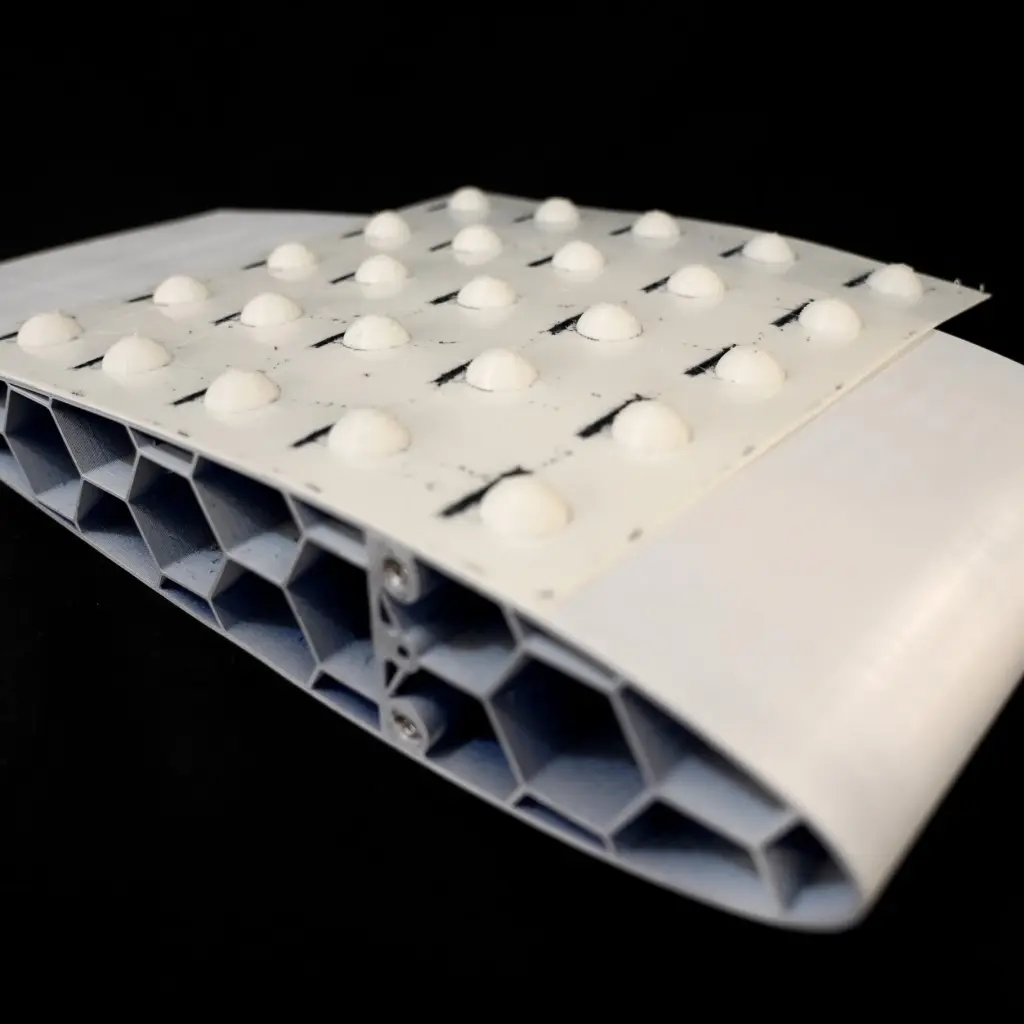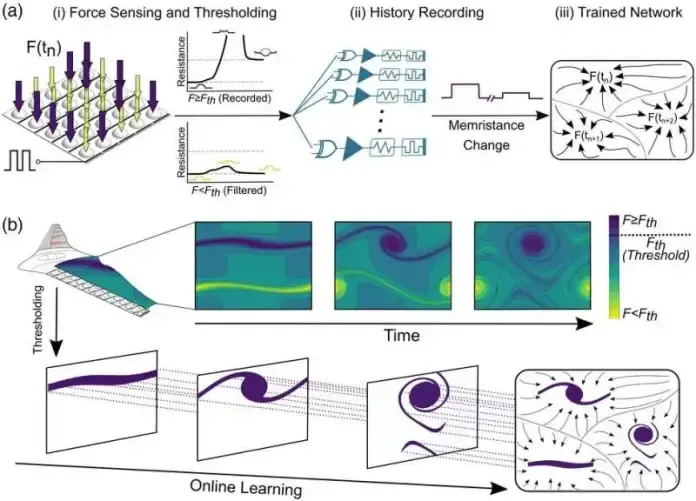Researchers at Purdue University and the University of Tennessee, Knoxville, have conducted a study that focuses on patterns on invertible domes on a drone’s wings; this study gave the drone a way to remember in microseconds what dangerous conditions feel like and react quickly. They published this paper in the journal of Advanced Intelligent Systems, and had a first hand demonstrations of a metamaterial that uses its shape to learn how to adapt to its surroundings on its own. This is a drone wing that could learn how to sense danger faster.

This discovery is all thanks to the small domes occasionally pressed on soda’s to-go cup lid. Humans and other living beings are quite different from autonomous vehicles, the latter lack ways to filter out information they don’t need, which slows their response time to changes in their environment.
Andres Arrieta, who is a Purdue University associate professor of mechanical engineering with a courtesy appointment in aeronautical and astronautical engineering, commented on the subject: “There’s this problem called ‘data drowning.’ Drones cannot use their full flight capability because there is just too much data to process from their sensors, which prevents them from flying safely in certain situations,”

It has been proven that dome-covered surfaces that can sense their surroundings and would be a step toward enabling a drone’s wings to feel only the most necessary sensory information. Usually, it only takes a certain minimum amount of force to invert a dome, and forces below this threshold are automatically filtered out.
“With a specific combination of domes arranged in a specific orientation to pop up and down at certain points of the wing of the drone, could actually indicate to the drone’s control system that the wing is experiencing a dangerous pressure pattern. Other dome patterns could signify dangerous temperatures or that an object is approaching,” Arrieta said when explaining how the drone wing can learn how to sense danger faster.

This Will Be Giving the Drones Associative Memory through Feel
For a human being it may seem strange that an invertible dome could give memory cues to a drone wing for when around dangerous conditions. Yes, humans and animals also use unrelated concepts to recognize relationships. But this type of learning strategy is called associative memory. A good example of this is how you remember a place you have forgotten by remembering certain details of the place detail such using the color of a building to remember it. Recalling a partial version of the memory allows you to construct a much more complete version of that memory.
Arrieta’s lab investigates ways that an engineered material’s shape could help it to compute and process information. His lab frequently takes inspiration from how spiders and other animals use their anatomical shapes to sense and understand the world around them.
Conclusion
For decades, electronics have been designed to save and retrieve images by encoding information in patterns of black or white pixels as zeroes or ones. Because a dome can adopt only two states—popped up or popped down—these states can act like zeroes and ones to create spatial patterns for building associative memory.
Read More
How to Build an SMS Based Metal Detector
How to Build a Wi-Fi based Smart Farm Monitoring System Project.

